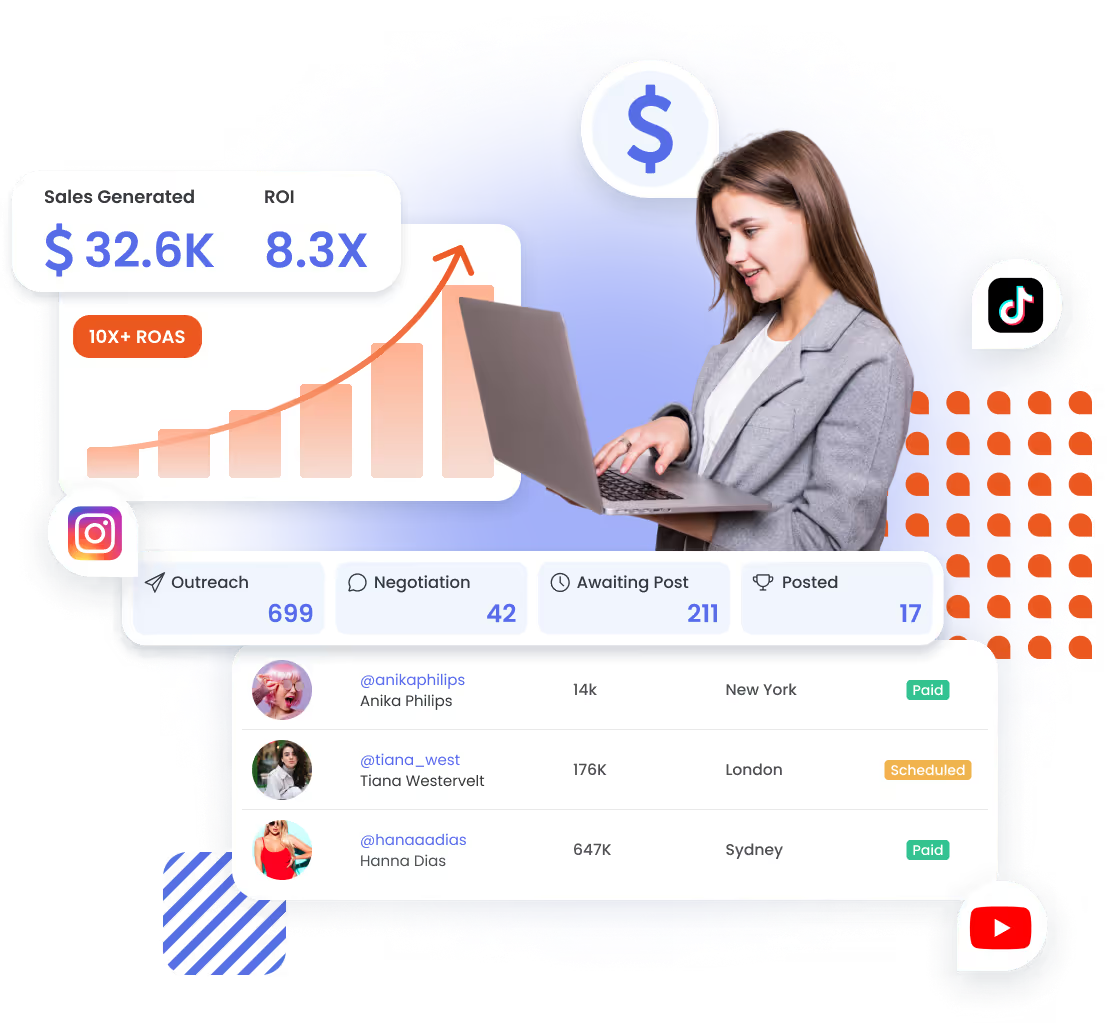


Performance marketing is a results-driven advertising strategy where brands only pay for specific actions, such as clicks, leads, or sales. Unlike traditional advertising, performance marketing focuses on measurable outcomes, making it a cost-effective way for brands to achieve their business objectives.
In influencer campaigns, brands often face the challenge of determining whether partnerships yield tangible results. Performance marketing solves this by aligning influencer payments with outcomes like website visits, sign-ups, or product purchases, ensuring every dollar spent contributes directly to your goals.
Performance marketing and influencer marketing are closely linked, as both focus on measurable results. In influencer marketing, brands often track performance through key metrics like click-through rates (CTR), conversions, and sales generated from influencer promotions. By using performance-based contracts, brands only pay influencers when specific actions, like purchases or sign-ups, are achieved. This approach aligns with the pay-for-results model that performance marketing embodies.
Brands rely on specific metrics to measure the success of performance marketing:
Influencer marketing integrates performance marketing across various platforms:
Tracking performance in influencer marketing requires robust tools like:
Influencer Hero streamlines payouts and performance tracking with automated systems and advanced tools. From secure payments via Stripe or PayPal to personalized dashboards for influencers, everything is designed for accuracy and transparency. Track key metrics effortlessly to measure campaign success and ROI.
Data-driven decision-making is crucial. Analyzing influencer performance helps refine strategies for future campaigns and ensures maximum ROI.
Traditional marketing focuses on building brand awareness, often without direct measurement of results. Performance marketing, on the other hand, is entirely results-driven, making it ideal for influencer campaigns that demand accountability.
While influencer marketing often focuses on creative storytelling, integrating performance marketing ensures every campaign is tied to measurable outcomes. This alignment makes influencer collaborations more transparent and goal-oriented.
Discover how a skincare and beauty brand achieved an impressive 7.2x ROAS with Influencer Hero by optimizing influencer partnerships, leveraging affiliate marketing, and tracking performance with precision. Learn how the brand scaled its campaigns efficiently while maximizing returns.
Client:
Olivida, a skincare & beauty brand in the Netherlands that offers a wide range of skincare products along with personalized skincare advice through their beauty salons.
Objective:
To enhance their marketing efforts by integrating social media strategies, particularly influencer marketing, to reduce costs and maximize return on advertising spend (ROAS).
Problem:
Despite using Google paid ads and organic SEO, Olivida was struggling with low ROAS for Meta paid social ads, which they attributed to high competition and increased costs driven by large enterprises.
Strategy:
Olivida introduced influencer marketing to their advertising strategy. They combined automatic influencer gifting with an affiliate marketing model, aiming to reduce costs while identifying high-performing influencers. They also re-used influencer-generated content (UGC) in paid social ads to improve their Meta campaigns.
Result:
Olivida achieved a 7.2X ROAS in their initial influencer marketing campaign. By identifying 7 top-performing influencers, they established long-term brand ambassador partnerships. They also reduced their average customer acquisition cost (CAC) by over 150%, contributing to sustainable growth. Re-utilizing influencer content for paid social further boosted their Meta ROAS from 1.1X to 2.6X, amplifying the success of their campaigns.
Performance marketing focuses on measurable outcomes, making it a powerful strategy for brands looking to maximize ROI. When combined with influencer marketing, brands can implement pay-for-results models where they only pay influencers for specific outcomes like conversions or sales. By using tools like Influencer Hero, brands can track the performance of campaigns, access campaign report and analytics, optimize for better results, and increase their overall marketing efficiency.
Traditional marketing focuses on brand awareness and visibility, while performance marketing is results-driven, where brands pay only for actions like clicks, leads, or purchases.
Brands use performance marketing strategies in influencer marketing by offering affiliate deals, commission-based payments, and pay-per-conversion models. This ensures payment is tied to actual campaign results.
Channels include social media ads, search engine marketing (SEM), affiliate marketing, and influencer marketing platforms like Influencer Hero.
Brands use tools like Google Analytics, UTM tracking, and campaign dashboards on platforms like Influencer Hero to track metrics like CTR, conversion rate, and ROI.
Typical actions include clicks, sales, leads, app downloads, and sign-ups.

Join 350+ brands & 100+ agencies. We help small businesses which are just starting out all the way to publicly traded companies working with Blue Chip Clients like Disney, TOYOTA and Samsung.